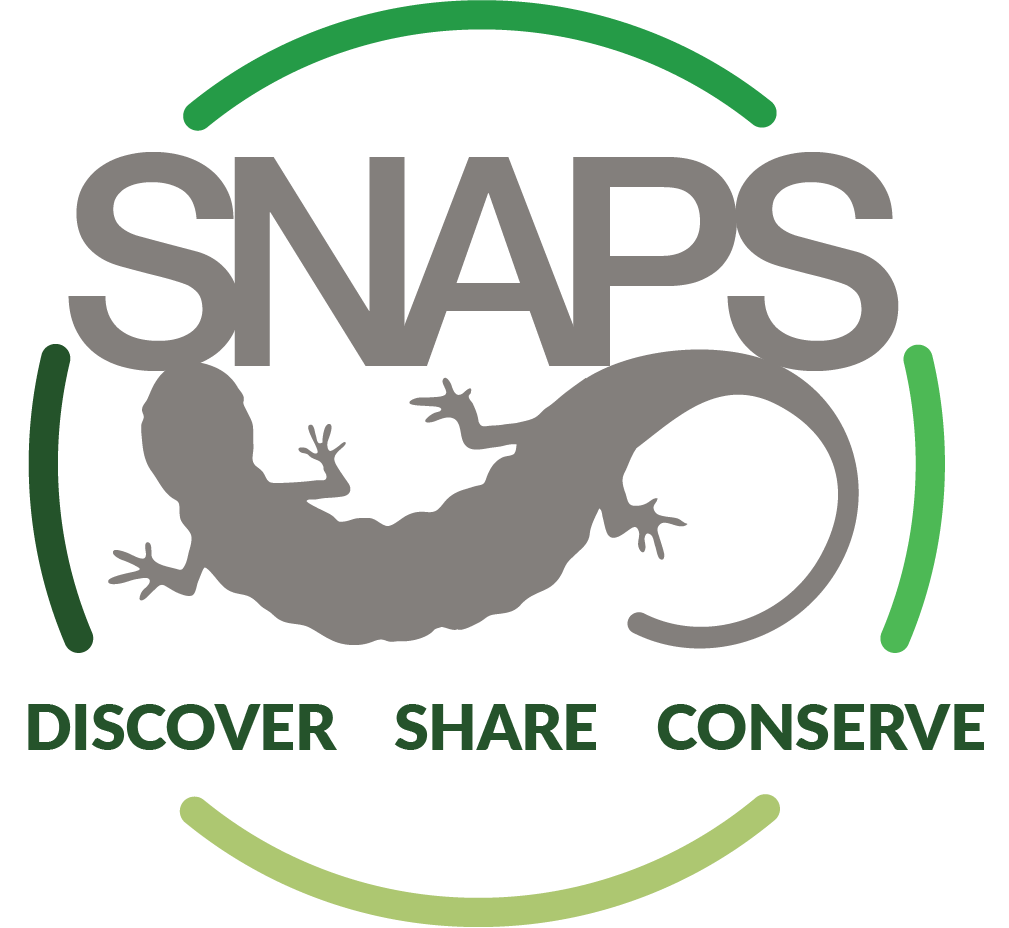Frequently Asked Questions (for lingering questions not addressed here, please contact Sasha Greenspan: sasha.greenspan@gmail.com)
Q: I may not be able to achieve the recommended amphibian sample sizes (20 individuals of 2 species). Can I still participate?
A: Yes! Large sample sizes of individual species are optimal both to maximize confidence that Bsal is absent and to accurately estimate Bd prevalence at a site. However, smaller sample sizes are still valuable to meet our goal of Bsal detection, so feel free to sample species that may be in
low abundance. See the SNAPS Sampling Guidelines for more information.
Q: Is it ok to sample frogs instead of salamanders?
A: Yes! Some frog species that have been experimentally challenged with Bsal are categorized as Bsal carriers and may be sampled. In cases where tested species cannot be sampled, taxonomically similar species can be targeted. See the SNAPS Sampling Guidelines for a list of tested species and other information.
Q: What is the process for obtaining a state wildlife collecting permit?
A: Permitting procedures may differ across states. Contact your state wildlife agency for more information.
Q: Can I participate in SNAPS using my own laboratory and funding?
A: SNAPS is currently keeping sample processing centralized at the National Wildlife Health Center, but we are exploring self-funding and expanding laboratory participation as options for the future.
Q: Can you provide guidance for applying for IACUC approval at my institution?
A: IACUC approval processes vary by institution, but we can offer some assistance. If you’d like to submit an IACUC SNAPS protocol through your own institution, we can provide an example protocol for you to base your submission on. You also have the option of joining the protocol hosted at the University of Vermont. To do this, we’ll need you to complete some paperwork. Please be in touch with questions.
Q: What laboratory protocols does SNAPS use for Bsal and Bd detection?
A: DNA is extracted from amphibian skin swabs using Prepman Ultra (Applied Biosystems) and MP Bio fast-prep tissue homogenizer to lyse cells using zirconium beads. The NWHC uses Real-time duplex qPCR for simultaneous detection of Batrachochytrium salamandrivorans (Bsal) and Batrachochytrium dendrobatidis (Bd). Serially diluted standards of Bsal and Bd (Gblock) are used to generate standard curves for quantitative assays and to verify the efficiency of each PCR run. Primers and duplex conditions follow Blooi et al. 2013 and 2016. The Qiagen QuantiFast PCR kit is currently used, but this kit is being replaced by the Qiagen QuantiNova kit (optimization trials ongoing). BSA is added to all reactions. The NWHC uses QuantStudio and ABI 7500 Fast PCR machines.
